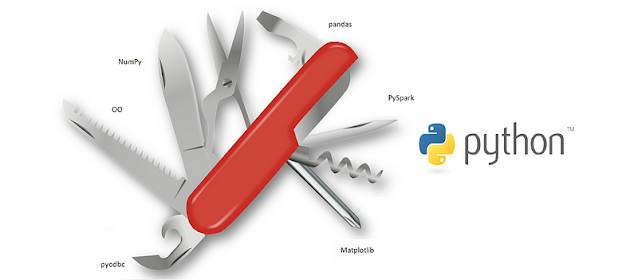Python: The Swiss Army Knife of Data Science
Python has emerged as the de facto language for data science, offering a powerful and versatile toolkit for handling, analyzing, and visualizing data. Its readability, flexibility, and extensive ecosystem of libraries make it an ideal choice for both beginners and experienced data scientists.
Essential Python Libraries for Data Science
- NumPy: The cornerstone of scientific computing in Python, NumPy provides efficient multi-dimensional arrays and matrices, along with mathematical functions for operating on these arrays.
- Pandas: Built on top of NumPy, Pandas offers data structures like DataFrames and Series, which are essential for data manipulation, cleaning, and analysis.
- Matplotlib: A versatile plotting library that allows you to create a wide range of visualizations, including line plots, scatter plots, histograms,
and bar charts. - Seaborn: A high-level data visualization library built on top of Matplotlib, Seaborn provides a more aesthetically pleasing and convenient interface for creating statistical visualizations.
- Scikit-learn: A comprehensive machine learning library that offers algorithms for classification, regression, clustering, and more. It also includes tools for preprocessing data, feature engineering, and model evaluation.
- TensorFlow: A popular open-source platform for machine learning, TensorFlow is particularly well-suited for deep learning tasks, such as image recognition and natural language processing.
- PyTorch: Another popular deep learning framework, PyTorch is known for its flexibility and ease of use, making it a good choice for researchers and developers.
Key Techniques for Data Analysis
- Data Cleaning and Preprocessing: This involves handling missing values, outliers, and inconsistent data formats. Techniques like imputation, normalization, and feature scaling are essential.
- Exploratory Data Analysis (EDA): EDA helps you understand the data's characteristics, identify patterns, and uncover potential insights. Visualization techniques like histograms, scatter plots, and correlation matrices are crucial.
- Feature Engineering: Creating new features from existing ones can improve model performance. Techniques like feature selection and dimensionality reduction can help identify the most relevant features.
- Model Building and Training: Choose appropriate machine learning algorithms based on your problem and data. Train your models using relevant datasets and evaluate their performance using metrics like accuracy, precision, recall, and F1-score.
- Model Evaluation and Tuning: Assess your model's performance on a separate test dataset and fine-tune its parameters to improve accuracy. Techniques like cross-validation and hyperparameter tuning can be helpful.
- Deployment: Once your model is trained and evaluated, deploy it to a production environment where it can be used to make predictions on new data.
Real-World Applications of Python for Data Science
- Financial Analysis: Analyzing stock market data, predicting financial trends, and detecting fraud.
- Healthcare: Developing predictive models for disease diagnosis, drug discovery, and personalized medicine.
- Customer Analytics: Understanding customer behavior, predicting churn, and recommending products.
- Natural Language Processing: Analyzing text data for tasks like sentiment analysis, machine translation, and chatbots.
- Computer Vision: Processing and understanding visual data for tasks like image recognition, object detection, and image segmentation.
Python's versatility, coupled with its rich ecosystem of libraries, makes it a powerful tool for data scientists. By mastering these essential libraries and techniques, you can tackle a wide range of data-driven challenges and unlock valuable insights from your data.

